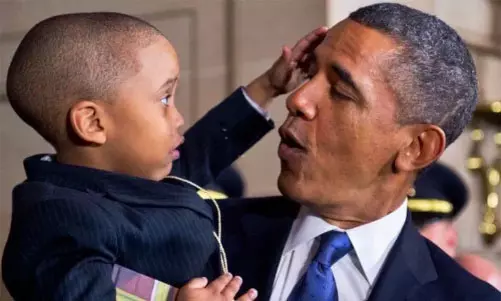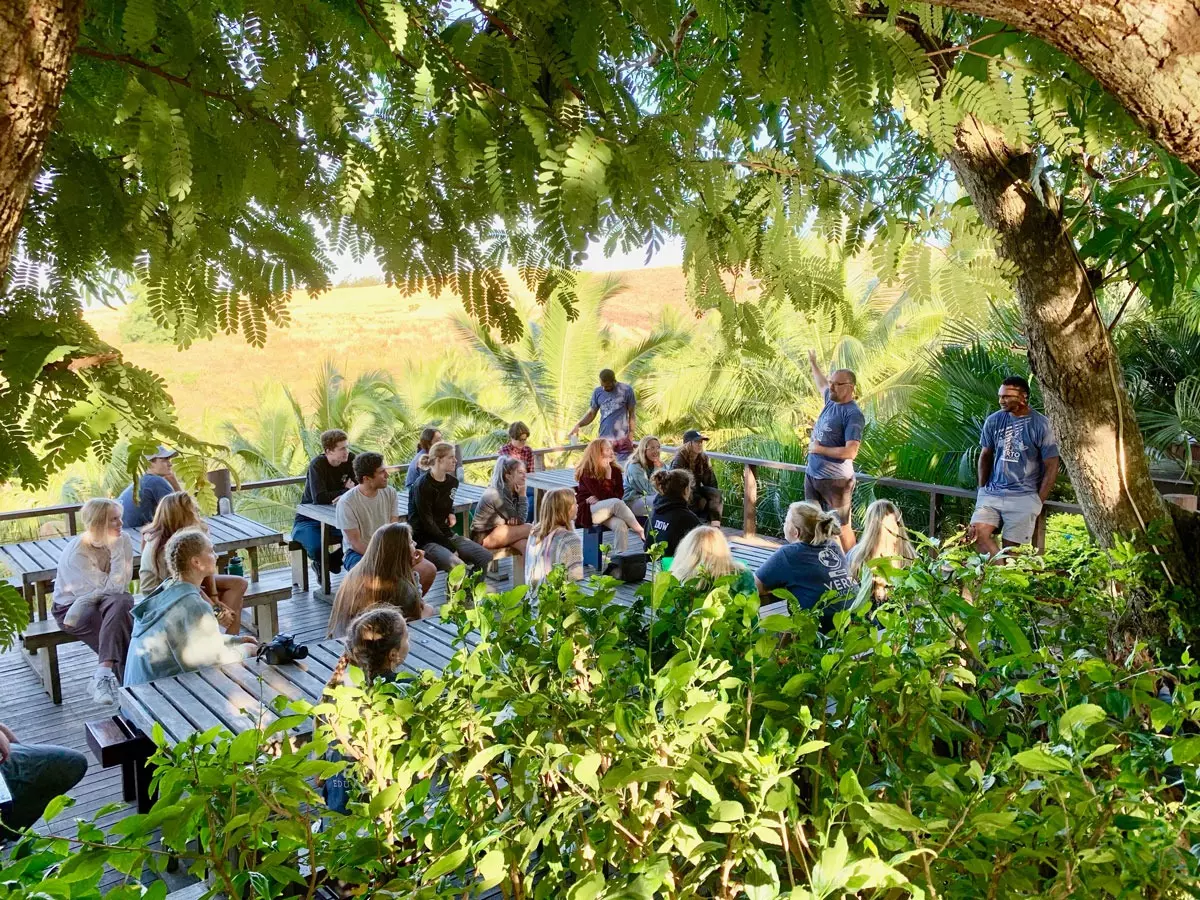One of the biggest challenges in the field of international education is increasing the participation of underrepresented student groups. Although data shows that study abroad is becoming more diverse, there is still a long way to go. Diversity doesn’t happen by accident. Some universities and third party providers are proving that it can be achieved through intentional design and innovation in addressing the root causes.
How is underrepresentation defined in the context of global education? It is when a group of students participate in study abroad in fewer numbers than they represent in U.S. colleges and universities. This includes (but is not limited to) racial and ethnic minorities, international students, religious minorities, students with disabilities, low income students, first generation college students and students from immigrant families.
Despite the fact that the number of Black, Hispanic and American Indian students enrolled in college has been increasing over the past 40 years, their percentages in study abroad have not kept up. We know that graduation rates tend to be higher for students who have been abroad, especially for low-income and minority students, according to a report by the University System of Georgia. Study abroad could be one crucial element in increasing graduation rates among these students. According to the latest Institute of International Education (IIE) Open Doors 2018 report, Black, Hispanic and American Indian students study at a rate that is roughly half of their enrollment in college. And although the percentage of college students who are white has decreased from 84% in 1974 to 57% in 2016, White students are overrepresented in international education by about 14%, meaning that they study abroad at a rate that is 14% higher than their college enrollment rate.1
Why does diversity abroad matter?
Apart from the obviously skewed numbers presented above, why does diversity abroad matter? I think it matters for 3 fundamental reasons:
1. It’s what we say we’re about.
Look at the mission, vision and values of any international education organization and you’ll invariably encounter calls to change the world in a positive way and foster a connected international community, an emphasis on the values of empathy and a shared humanity, and the belief that every person deserves a transformative educational experience. Changing the world starts with us…at home. These ideals must translate to opportunities for all of our students. If we are to live out our mission and values, we must not allow study abroad to continue to be a right of passage for the affluent and inaccessible to all others.
2. It’s about institutional survival.
Overall college enrollment has now dropped for the 8th year in a row, according to data released by the National Student Clearinghouse Research Center in 2019. Institutes of higher education are struggling to compete. However, the numbers of racial and ethnic minorities enrolled in college is increasing. These institutions must find ways to respond to and anticipate the changing demographics in our social and educational landscape. An upswing in enrollment is not expected for another 4 years, and when it comes it will be largely low income, first generation and racial and ethnic minorities who cause the new surge.2 Diversity in study abroad is no longer a “nice to have”. It is about addressing an existential crisis.
3. Diverse experiences provide educational benefits for all students.
Because of these changing demographics, our future as a country will be even more international and multicultural. But our young people are unprepared. Americans live in social and economic silos. We are more segregated today in our schools, churches and neighborhoods than we were in the 1970s.3 One of the benefits of higher education is to expose students to a vast array of intellectual and social experiences. Hall et al. found that “engagement with diverse peers is a learned behavior […] shaped long before a student stepped into college”.4 The quality of pre-college interactions across racial lines predicts how students will interact on campus. These interactions before college and during college prepare our youth for success in a diversifying society and workforce. I have always believed that some of the most important learning that occurs while abroad is within the student group itself. When that student group is comprised of people from various social, economic, national and religious backgrounds, the learning is that much more powerful.


Lack of access to education abroad is not a new problem. It has existed as long as study abroad programs have existed. Dr. Marjorie Ganz, Director of the Study Abroad & International Exchange Program at Spelman College, first conceived of the “4 F’s” (Family, Finances, Fear and Faculty), as the major barriers to study abroad that students face. Family refers to parents’ reluctance to send their children abroad. Finances refers to the financial challenges related to studying abroad. Fear is students’ fear of traveling to a new country. And faculty is the tendency of college professors to discourage students from studying abroad because of a perceived delay it would present in their graduating in their chosen major on time. Historical approaches have placed those barriers squarely on the students themselves. However, newer and more successful approaches acknowledge that there is much that institutions can do to help students overcome these barriers. They recognize that the problem is systemic and institutional (not just personal), and therefore there are systemic and institutional solutions to be implemented.
So what can institutions do, and what is working? Successful efforts to address diversity and inclusion in global education have centered around 5 key areas: outreach, pre-departure, advising, programming and re-entry.
Outreach
Take a look at any global education brochure and you will likely see a group of white students happily smiling as they ride an elephant or stand under a waterfall or float down an exotic river. I once heard from a black student who looked at one such brochure and concluded: “Looks like a program for white people.” If students don’t see themselves reflected in outreach materials, they will assume it’s not for them. And how could you blame them for having this impression? Based on the study abroad statistics mentioned above, global education really hasn’t been for them.

Many programs are tackling this issue head on with creative outreach efforts. #StudyAbroadSoBlack is a hashtag introduced by Howard’s Ralph J. Bunche Center with the goal of encouraging black travelers to share pictures and tales of their journeys and encourage others to see the world as well. According to the center’s mission statement, the hashtag is “both a declaration and a call to action letting it be known that studying abroad is a learning experience that is accessible and necessary for students at Howard and elsewhere.” The purpose of the hashtag is also to ease potential travelers’ fears about not seeing black people in foreign countries or about being the only black traveler. This is an example of the ways that programs are attempting to tell a multi-faceted story of study abroad.
Predeparture
Once a student is committed to studying abroad, this is only the beginning of the support they need. Traditionally marginalized students have many fears about what their experience will be like in a foreign country. The University of Pittsburgh holds a pre-departure session exclusively for first-time travelers. Challenges such as navigating an airport, packing, medications, and vaccinations are covered as well as financial issues such as informing your bank that you will be abroad or international fees for ATMs. Bentley University’s study abroad office incorporates a section on identity and diversity into its pre-departure orientations and holds advising hours in the multicultural center. Preparing students for what they can expect in their host country is key at this point in the study abroad process.
Advising
Strategies for effective advising include building trust through active listening, preparation and follow-up. Advisors to underrepresented students must first know themselves and their comfort level addressing student diversity issues such as race, ability, LGBTQ, etc. and then work to increase their comfort level in order to become a resource to all students, as opposed to a liability. An advisor who is a resource builds a network of support for their particular students’ needs, attends diversity conferences and various campus events that their students are involved in. Macalester College is taking a proactive approach. As a first step to studying abroad, students are asked on an advising questionnaire to identify any specific identity-related topics they would like to address in a one-on-one advising appointment. Advisors see the questionnaire before students schedule advising appointments, allowing them time to prepare for identity-specific conversations with students during in-person advising meetings.
On the Ground/Programming
In my previous article, I outlined some of the ways that staff can support students on the ground. It is also crucial to provide programming that is responsive to the needs of underrepresented students. San Diego State University offers a short-term summer study abroad program in the Dominican Republic that focuses on leadership, identity and diversity in a global context. Participants discuss what it means to be American, what poverty looks like globally, the role African-American men play in global citizenship, and the historical framework of modern slavery and mental colonization. In its curriculum, location, cost and duration, this program is a shining example of accessibility.
Re-entry
The story is not over once a student lands back at home. Returnees need space to unpack their experiences. For some students, a safe space to do this might be the LGBTQ center or the multicultural center on campus. The State University of New York at Oswego (SUNY Oswego) mounted a campaign called “I, Too, Am Study Abroad”, a discussion series where returning students speak candidly about their experiences abroad, including issues they faced related to race, ethnicity, sexual orientation, and socioeconomic background. These Study Abroad Mentors (SAMs) wear t-shirts that say on the front ‘I studied abroad. Ask me where.’ On the back it says ‘I, Too, Am Study Abroad’. Providing opportunities for returnees to translate their time abroad to success in school, career and life is key.
Based on these examples, we can see that some third party providers and college campuses have shown innovation in their efforts to increase the numbers of students going abroad from traditionally underrepresented groups. Beyond creativity, even more is required. Those that have put forth concerted and sustained efforts have experienced a dramatic rise in these numbers. But diversity isn’t just about numbers. A comprehensive application of inclusionary principles in all stages from outreach to re-entry is essential if we are to get this right.
1 IE 2018 Open Doors Report, U.S. Dept of Education, National Center for Education Statistics (2019)
2 https://hechingerreport.org/universities-colleges-struggle-stem-big-drops-enrollment/
3 Robert D. Putnam, Our Kids: The American Dream in Crisis (New York: Simon & Schuster, 2015)
4 Hall, Wendell D.; Cabrera, Alberto F.; and Milem, Jeffery F. (2011). A Tale of Two
Groups: Differences Between Minority Students and Non-Minority Students in their Predispositions to and Engagement with Diverse Peers at a Predominantly White Institution. Research in Higher Education, 52, 420-439.


